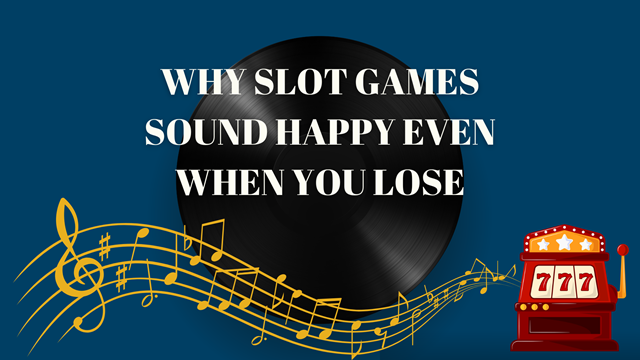Imagine a world without music—where the symphony of melodies, harmonies, and rhythms is silenced, and our souls are left in eternal silence. Music possesses a transformative power that transcends language barriers, evokes emotions, and transports us to unimaginable realms. It is a universal language that speaks to the depths of our being, resonating with the very essence of who we are.
Crafting a well-written essay that effectively analyzes and interprets music requires dedication and skill; for those who may need additional support, seeking guidance from reputable sources like BoomEssays, an essay writing service, can be a valuable resource in honing their abilities and achieving academic excellence.
In this age of digital streaming and instant gratification, the art of listening deeply to music and understanding its nuances is often overlooked. However, for those seeking to delve into the profound depths of musical expression and communicate their insights through the written word, this article aims to be a guiding light. Whether you’re a student, a music aficionado, or an essay writer seeking to enhance your skills, the techniques and strategies shared here will empower you to analyze and interpret musical pieces with confidence and finesse.
Why is it crucial to analyze and interpret music in essays? Beyond its auditory pleasures, music serves as a powerful vessel for conveying emotions, exploring cultural narratives, and encapsulating historical moments. When you incorporate an insightful analysis of a musical piece into your essay, you unlock a world of possibilities—illuminating hidden meanings, fostering connections with other art forms, and enriching your readers’ understanding of the subject matter. An essay that skillfully dissects a musical composition demonstrates your ability to engage deeply with the arts and provides a unique perspective that sets you apart. So, whether you’re crafting an academic paper, a journalistic piece, or an exploration of personal experiences, the techniques presented here will empower you to weave the tapestry of music into the fabric of your prose.
The Context
Delving into the heart of a musical composition necessitates unraveling the threads of its rich contextual tapestry. By exploring the historical, cultural, and social factors surrounding the piece, we gain a deeper appreciation of its significance. Tracing the roots of the musical piece allows us to comprehend the intricate layers of inspiration and creativity woven into its fabric.
To truly grasp the essence of a musical piece, we must first understand the hands that shaped it. Examining the life and influences of the composer provides valuable insights into their artistic vision. Moreover, identifying the genre in which the composition belongs allows us to contextualize it within a broader musical framework. Exploring the historical period in which the piece emerged sheds light on the prevailing artistic movements, ideologies, and societal events that may have influenced its creation.
Music is a mirror reflecting the pulse of society, echoing its joys, struggles, and aspirations. By unearthing the cultural and social influences embedded within a musical composition, we gain a profound understanding of its deeper layers of meaning. Whether drawing inspiration from political unrest, celebrating cultural heritage, or capturing the zeitgeist of a particular era, these influences shape the composition’s unique identity.
Elements of Music to Analyze
1. Melody
- Melody, the soulful heartbeat of music, is the thread that weaves a composition’s narrative together. Analyzing the melody unveils its emotive power and significance, highlighting its ability to evoke moods, convey messages, and captivate the listener.
- At the core of every composition lies a primary melodic theme, a musical motif that serves as the focal point of the piece. Identifying this central theme enables us to trace its transformations and variations throughout the composition, offering insights into the composer’s artistic choices and intentions.
- Unveiling the contours, range, and development of the melody unveils a world of expressive possibilities. Examining the melodic shape, its ascending and descending movements, and its exploration of different tonalities illuminates the composition’s emotional trajectory and narrative arc.
2. Harmony
- Harmony, the interplay of chords and their progression, bestows depth and complexity upon a musical piece. Analyzing the harmonic structure allows us to unravel the intricate webs of tension, release, and resolution that shape the composition’s emotional landscape.
- Delving into the underlying chord progressions reveals the interconnections and relationships within the composition. By scrutinizing the harmonic choices and their order, we uncover the composer’s harmonic language, unveiling the composition’s unique tonal palette.
- Dissonance and tension are powerful tools in the composer’s arsenal, capable of evoking heightened emotions and creating a sense of urgency. Recognizing instances of dissonance and tension, and exploring their resolution or persistence, allows us to unravel the intricate emotional tapestry woven into the composition.
3. Rhythm and Meter
- Rhythm serves as the heartbeat of music, propelling it forward and infusing it with energy and vitality. Analyzing the rhythmic patterns and meter reveals the pulse and structure that underpin the composition’s musical fabric.
- Delving into the rhythmic intricacies uncovers the subtle patterns, syncopations, and accents that give a composition its distinct character. By identifying these rhythmic elements, we gain insights into the piece’s rhythmic propulsion and its connection to dance, cultural traditions, or even the heartbeat of human experience.
- Meter provides a framework and sense of stability within a composition, influencing its pacing and overall flow. Examining the use of meter allows us to appreciate how the composition’s structure aligns with or deviates from established rhythmic conventions, enhancing its expressiveness and impact.
4. Texture
- Texture, the interplay of musical voices, shapes the sonic landscape of a composition. Analyzing the layers and interactions between these voices reveals the composition’s depth, complexity, and sonic richness.
- Unraveling the intricate web of musical voices—whether through polyphony, homophony, or other textures—allows us to discern the individual voices’ contributions and their collective impact. This analysis unveils the composer’s mastery in creating a cohesive and compelling sonic tapestry.
- Texture is not static but often evolves throughout a composition, punctuating its narrative and highlighting pivotal moments. Identifying shifts in texture, such as the introduction of new voices or the stripping down to a solo instrument, unveils the composer’s intentional choices and enriches our understanding of the composition’s emotional trajectory.
5. Dynamics and Expressive Techniques
- Dynamics and expressive techniques bring a musical composition to life, shaping its emotional nuances and evoking a profound response from the listener. Analyzing these elements allows us to appreciate the interplay between volume, articulation, phrasing, and other expressive devices.
- The ebb and flow of dynamics—ranging from soft whispers to thunderous crescendos—imbue a composition with vitality and dramatic tension. Examining the subtle and dramatic changes in volume enables us to uncover the composer’s intent in evoking specific emotional responses.
- Expressive techniques such as articulation, phrasing, and ornamentation breathe life into the notes on the page, infusing them with personal interpretation and imbuing the composition with a unique voice. Exploring these techniques offers insights into the composer’s intentions and allows us to appreciate the nuances that make each performance and interpretation distinctive.
Interpreting the Musical Piece
Emotional Response
- Music possesses a remarkable ability to stir the depths of our emotions, enveloping us in a whirlwind of feelings. It can transport us to moments of bliss, invoke profound sadness, or ignite a fire of passion within. Analyzing the emotional impact of the music requires delving into the intricate interplay of dynamics, melody, and harmony, unraveling how these elements collaborate to elicit specific emotional responses from the listener.
- The composer’s deliberate choices in dynamics, melody, and harmony are key in shaping the emotional landscape of a musical piece. Examining the contrasting dynamics—gentle whispers, thunderous climaxes—and their relationship to the melody and harmony unveils the composition’s power to evoke joy, melancholy, suspense, or a myriad of other emotions. By understanding these artistic decisions, we gain insight into the emotional journey the composer intended to take the listener on.
Narrative or Programmatic Elements
- Some musical compositions are imbued with narratives or programs, taking the listener on a journey through vivid imagery or storytelling; these are aspects that effective music PR services can convey. Exploring the possibility of a narrative or program behind the music allows us to delve deeper into the composition’s intentions and meaning. It invites us to imagine characters, landscapes, or events that the music seeks to portray, further enriching our interpretation.
- The connection between music and narrative is a delicate dance, as the composer weaves sonic tapestries that evoke images, moods, or events. Examining the interplay between musical elements and potential narratives uncovers the composition’s ability to transcend the boundaries of language and communicate through the evocative power of sound.
Symbolism and Metaphor
- Music has a unique capacity to convey meaning beyond words, often employing symbolic elements that resonate with our collective consciousness. Identifying possible symbolic elements within the music allows us to unravel hidden layers of meaning, unveiling the composer’s intentions and inviting personal interpretations.
- Metaphors are powerful tools in artistic expression, transcending the literal and guiding us into realms of abstract understanding. Examining the use of musical metaphors within a composition reveals the composer’s ability to imbue music with imagery, enabling listeners to perceive and connect with deeper levels of meaning.
Cultural and Historical Significance
- Music is not created in a vacuum but is shaped by the cultural and historical milieu in which it emerges. Discussing the relevance of the musical piece within its cultural and historical context allows us to appreciate its societal impact, the echoes of political or social movements, or its resonance with philosophical ideologies. It reveals the profound interconnectedness between music and the world that surrounds it.
- Musical compositions have the power to challenge conventions, voice dissent, or reflect the spirit of their time. Exploring the political, social, or philosophical implications embedded within the music unveils the potential for artists to use their craft as a vehicle for social commentary or as a catalyst for change. Understanding these implications deepens our appreciation for the composition’s significance within the broader human experience.
Conclusion
Analyzing and interpreting music is not merely an academic exercise but an endeavor that unlocks the depths of human expression. It allows us to connect with the creative vision of composers, delve into the intricacies of their art, and engage in meaningful discourse. Incorporating this analysis into essays enhances our ability to communicate the transformative power of music.





